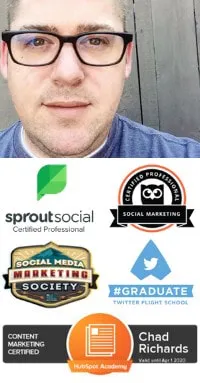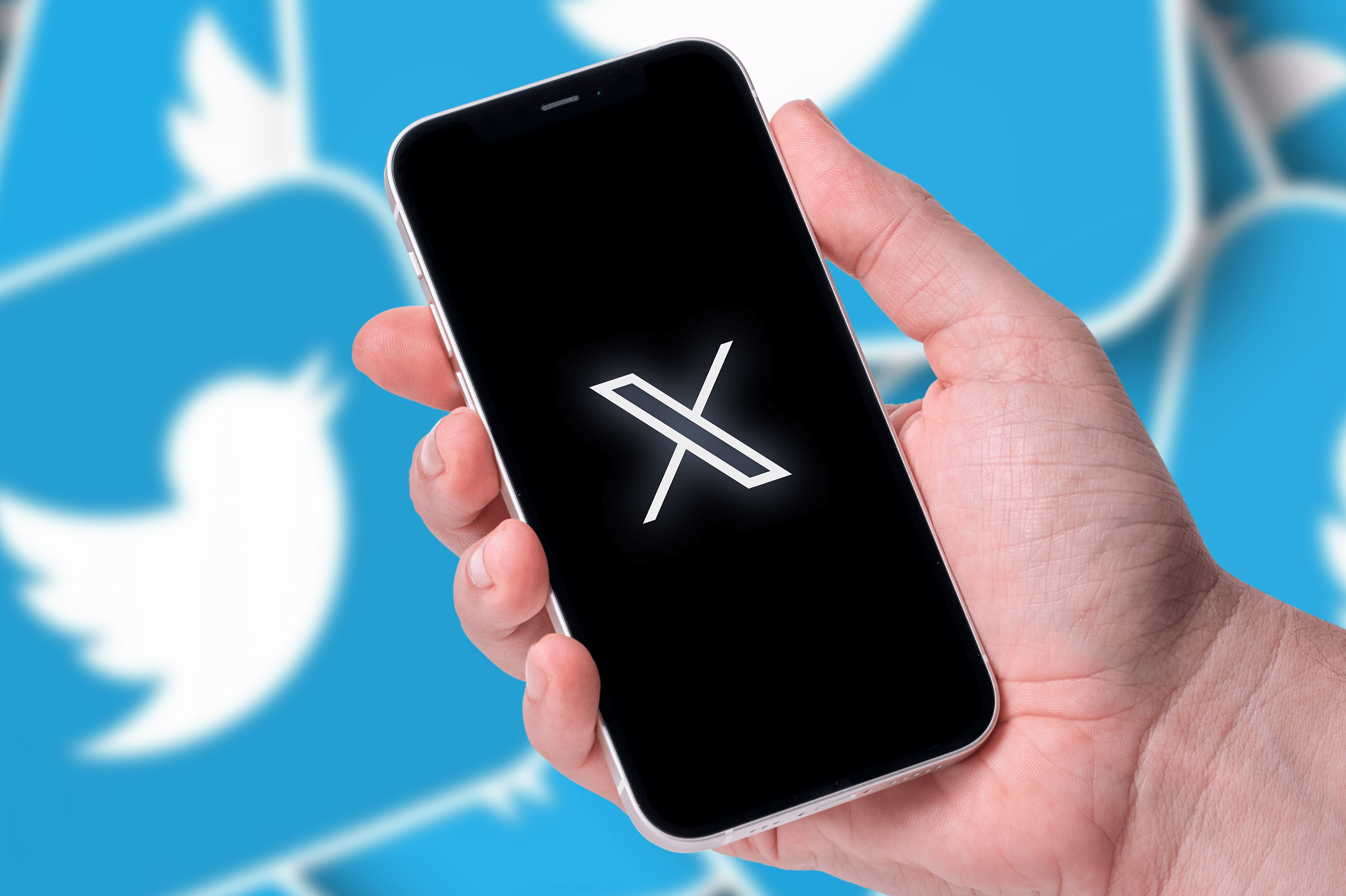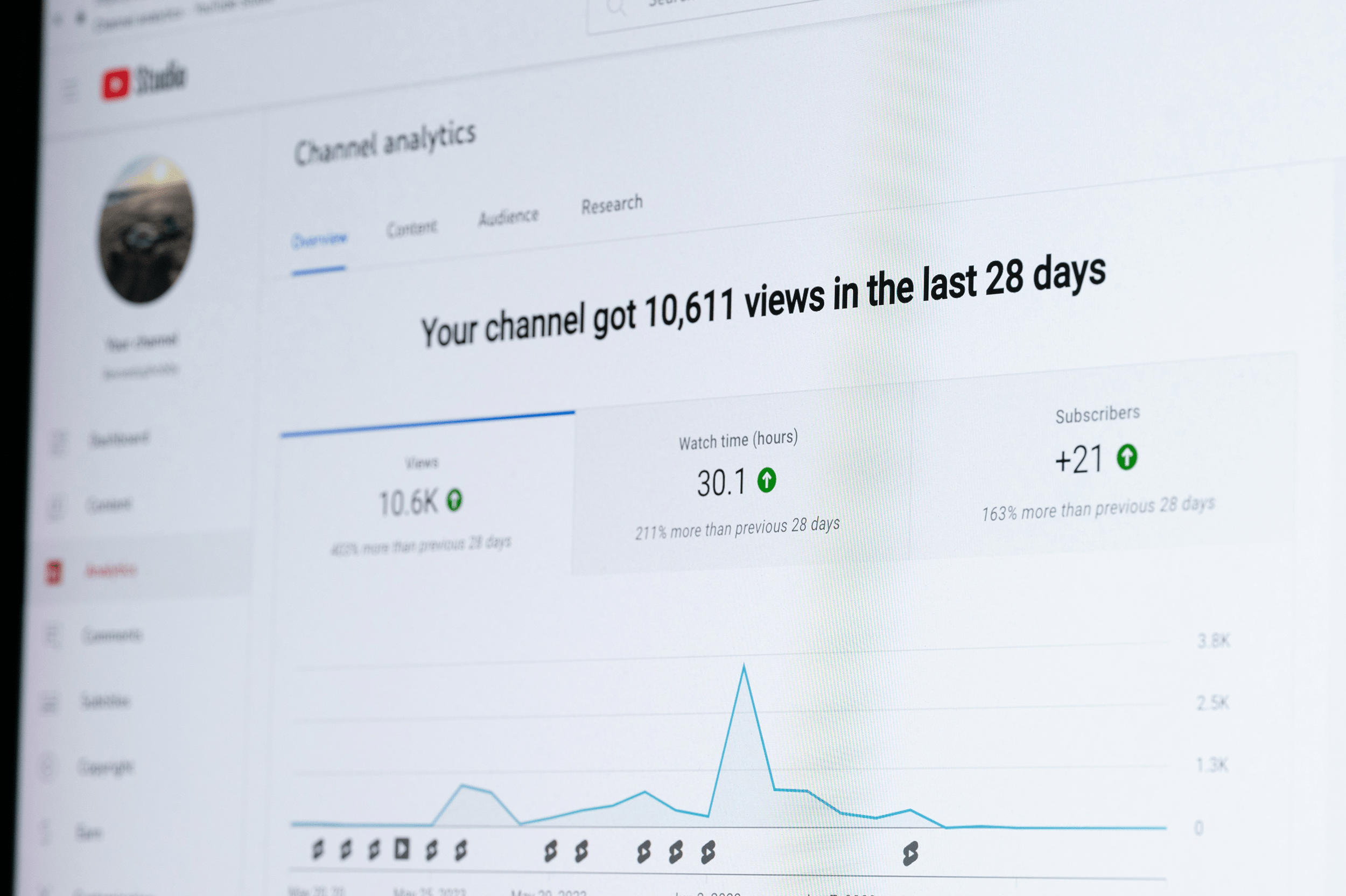As more businesses start leveraging Instagram to tap into the app’s incredible (and growing) reach, the spotlight is shining on Instagram analytics.
While there are many benefits to Instagram’s built-in analytics functionality, many brands are making common mistakes. As a result, they’re missing out on opportunities to leverage the full power of Instagram marketing to engage their audiences.
Whether you’re driving new followers with Instagram follow buttons, posting engaging content your audience can’t resist, running Instagram giveaways, or any combination of savvy Instagram tactics, Instagram analytics are the key to determining how well those strategies are working. But if you’re making mistakes with Instagram analytics, your insights may be flawed.
To gain some insight into the most common mistakes companies are making and how they can better take advantage of Instagram’s analytics to get better results from the popular platform, we reached out to a panel of social media marketing pros and asked them to answer this question:
“What’s the biggest mistake companies are currently making when it comes to Instagram analytics (and how can marketers avoid it)?”
Meet Our Panel of Social Media Marketing Pros:
Read on to learn what mistakes you could be making with Instagram analytics, and what you can do to overcome them.
Johannes Kanter
Johannes Kanter is a digital marketer who helps grow accounts on Instagram. He runs his own blog on Instagram marketing. He’s been featured in several media outlets on Instagram marketing topics and is also building his own Instagram account, @gettinggrowth.
“The most common mistake I see companies make when it comes to Instagram Analytics is…
“Either overthinking it or not thinking about it at all. Optimizing content for perfect posting times and choosing the right hashtags is important. However, trying new ways to stand out and even to go against the data might be a good idea to find ways to increase the engagement and reach different segments of your followers.
“The second mistake is not looking at the data, which hinders the growth potential. For example, posts with lower engagement rates can have a strong call-to-action and a better impact on the sales or profile visits from hashtag feeds.
“Lastly, the third mistake I see businesses make is not having clear KPIs. If you’re selling online, then measuring your success in likes and comments might not be the best option. Instead, use links that you can track and see which post or story drove the most amount of traffic to your website and converted it into sales.”
Chad Richards
Chad Richards is a Firebelly Marketing veteran—joining the team in 2007—and understands social media marketing better than most, making him Senior Social Media Manager. His results-driven nature leads the charge on all social media marketing initiatives for clients.
“The biggest mistake companies are making when it comes to Instagram analytics is…
“Not switching their Instagram accounts to business accounts so they have access to analytics. Many companies don’t even know Instagram offers analytics because they’re set up as personal accounts.”
Lisa Chu
Lisa Chu is the owner and CEO of Black n Bianco.
“The biggest mistake when it comes to Instagram analytics is…
“Not using a third-party app to track your competitors. There are dozens of apps to select from, but my favorite is Iconosquare. The app provides detailed analytics of my competitors’ communities, engagement, and growth. The app is especially useful when analyzing hashtag data and their engagement, giving me more data to refine and structure the best ROI when using Instagram ads or trying to gain more organic followers. Most importantly, the data collected can be easily reviewed and is centralized in one location. I am able to set up goals and trends to see how my Instagram is performing. I wanted to focus on building my brand through Instagram, and using a third-party app made the process a lot easier and smoother, giving me more energy and resources to focus on other important aspects of my business. The biggest mistake businesses make when it comes to Instagram analytics is not using third-party apps to help you collect the data you need to become a success.”
Tyler Tassinari
Tyler Tassinari is a Digital Marketing Strategist at Three29 in Sacramento, CA. Three29 is a full-service digital agency, specialized in web design and marketing.
“The biggest mistake companies are making when it comes to Instagram analytics is…
“Quality of content. With all of the statistics and data points that surround social media (specifically Instagram), the quality of content can easily get lost. While posting times, hashtags, and engagement rates absolutely should have their place in a strategy, we’ve found its equally important to continue creating relevant and high-quality content. Nailing peak traffic time and having the perfect collection of hashtags are great; however, a unique graphic or eye-catching video can be what be truly differentiates a great Instagram presence.”
Kevin Tash
Kevin Tash is the CEO of Tack Media, a Full Service Digital Marketing Agency in Los Angeles.
“They are spending too much time looking at…
“Impressions and likes, and not enough time focusing on who their followers are, where they are from, and which pieces of content are most engaging for their page. When you end up focusing on likes and followers, you are still ignoring the biggest factor – engagement – which is tied directly to Instagram’s algortihm for growth. It’s easy to get lost in one piece of data, but when you look at the overall picture, you have to take into account how many hashtags you are using, what percentage of traffic is resulting from using hashtags, or another reason that still doesn’t result in more customers, especially if you are a local business. Focus on which pieces of content get the most engagement and which ones are most likely to get target customers to engage with your business. That is the #1 missed opportunity.”
Morgan Kling
Morgan Kling is the Founder of Market Boost.
“One of the most common mistakes I see companies making with their Instagram account is that…
“They put way too much thought into how important their follower count is. Companies should be looking at overall growth based on a few specific metrics. Some of the things commonly ignored are:
- Profile visits
- Story swipe outs
- Video views
“While most brands are focused on how many followers they have, they’re missing the key metrics provided that let brands know if their audience even likes their content. Unfortunately, brand accounts with 500k followers that get 3,000 organic video views are a dime a dozen. Instagram analytics paint an incredible picture for marketers, but too many are hung up on vanity metrics.”
Connie Cambre
Connie graduated from Brenau University with a Studio Art degree. She finally landed at KontrolFreek after taking a journey through jobs in kids’ theater, multimedia, a group home for at-risk youth and as an insurance adjuster. She currently serves as Social Media Specialist and manages the content and engagement across KontrolFreek’s Facebook, Twitter, Instagram, Snapchat, and other social media accounts. She’s a Futurama-obsessed DragonCon enthusiast, and reps her Peruvian culture by quoting Emperor’s New Groove as often as possible.
“The keys to performance on any Social Media platform are authenticity and awareness…
“On Instagram, what companies define as ‘What Matters Most’ can largely differ from what matters most to their audiences and, often, what matters most to the platform algorithm to even get their posts in front of the target audience to begin with. Per the 2017 Consumer Content Report published by Social Media Today, ‘57% of consumers think that less than half of brands create content that resonates as authentic,’ and that ‘70% of the time, people can identify if an image was created by a brand as opposed to a consumer.’ This is particularly important with respect to Instagram – especially when you consider that, on average, ‘20% of consumers (and 30% of Millennials) have unfollowed a brand on social media because they felt their content was inauthentic.’
“The biggest mistake any company can make with platform analytics is starting their campaigns with an analytics-first mindset. Starting any campaign with analytics as the primary driver significantly distances a brand from their audience expectations, as content is being developed for the company instead of the consumer. It has the capacity to create a limitation on the type of content that is published and the risks that may be associated with testing and trying new and fresh ideas. If companies are hyper-focused on an analytical end result, the pressure to achieve those results can be harboring.
“Brands need to be willing to be vulnerable. Trade in analytical goals for analytical awareness as fuel for refining content instead of defining it, keeping in mind that the Instagram algorithm emphasizes popularity, relevancy, and relationship – not impressions, engagement, and revenue. In a brand-analytics relationship mindset, original content can become over-polished and prescribed. In an effort to piece together content that has every analytical box check-marked, companies lose the authenticity portion and become a part of the scroll instead of a part of the stop. It’s a fine line on Instagram between trying and trying too hard – and audiences know that. Instead, companies should follow the audience alongside the analytics and, in a way, let the audience determine which factors will shape your strategy.
“Be content in allowing your content to grow and adjust with consumers, steering them in the direction of brand goals without forcing them to follow it to a certain result. By letting the audience lead, your strategy will remain authentic to their needs while also influencing your offline company goals. In the native Instagram platform, the Insights tool can provide a look at your basic audience demographics and daily interactions as a starting point to determine how to position your content and when to share it to ensure that you’re sharing your best work when the most people are available to consume and enjoy it.
“As you begin to experiment, track per-post and weekly engagement results and adjust the plan as information is collected. I would also recommend utilizing an exterior formula of calculating Engagement Rate [(Engagement / Impressions) * 100] and determining how you compare to the standard within your industry, setting that percentage as a starting target, and adjusting based on monthly averages to push your teams to higher results.”
Jim Woodhead
Jim has run his own digital media and marketing business for 5 years. His agency – A for Agency – specializes in digital marketing and acquiring customers for his clients’ businesses. He has worked in Digital Marketing for 22 years now, and his client list includes brands from the UK, Europe, and the rest of the world. He’s 42, married with 2 children, and lives and works just outside Huddersfield, West Yorkshire on the edge of the Peak District National Park.
“I find that the problem that clients have with Instagram analytics (and analytics in general often) is…
“That they’re not asking the right question in the first place. Don’t chase numbers, because they only have meaning in context. Instead of getting counts of followers, impressions, or likes, ask whether you are attracting the right type of followers in the first place. If you don’t define the strategy up-front, then the numbers you get from Instagram have no meaning. My top tips would be:
- Have a plan before you start. Know who you want to attract and then use analytics to ensure that you’re reaching the right people.
- Download the numbers regularly and calculate things like your engagement rate, and then compare those to your competitors. You don’t want to be shouting into a void.
- Follow the analytics through to Google Analytics. Understand what Instagram is doing for your marketing as a whole.
- Look for trends instead of just raw data. Understand what works and what doesn’t.
“The analytics aren’t just a data collection and collation job. They should inform everything that you’re doing.”
Daniel Toft
Daniel Toft is the Senior Digital Strategist at Metric Digital.
“To get more out of Instagram analytics, companies should…
“1. See the spoke on the larger wheel. From a paid advertising perspective, brands mistakenly think they can get the most value from Instagram alone. But analytics will show that they’re not able to reach that many customers. Facebook incentivizes brands to use their ad formatting (i.e., Right Column, Messenger, Audience Network), which drives ad price down.
“2. Think beyond the newsfeed. Instagram is much more than just the newsfeed. Most companies only want to show ads there. They’re romantic about the idea of branding in such premium spots. But you pay a lot of money for that, and there are other avenue worth pursuing. They might not be as sexy, but they convert.
“3. Measure what matters. The other mistake about analytics is focusing on metrics that don’t matter. Engagement is the prime example. It’s important, but it’s not how Instagram should be valued. That platform should be seen as an acquisition channel and revenue driver. If marketers talk about success as a function of engagement, they’re missing out on what Instagram has evolved to be, which is a strong growth channel.”
Marko Saric
Marko Saric has worked in online/social marketing over the last 10+ years both for a social media analytics company and also for a large public listed company, running their social media presence. These days you can find him on https://howtomakemyblog.com.
“The biggest mistake companies make with Instagram analytics is that…
“They get too addicted to the soft metrics, such as the number of followers or the number of likes on their posts. They put these as their main goals with their Instagram activities, but these metrics don’t really say much about your performance and can easily be gamed by bots and other fake activity. The smarter companies dig a layer deeper and focus on the actual result of their Instagram activity, such as increase in brand awareness, visits to their sites, or actual sales.”
Jeremy Greenberg
Chicago-based Jeremy Greenberg founded 97 Switch based on the principle that high-quality digital service is necessary in today’s market. Through his experiences with small to large businesses, he learned how to derive solutions and adapt to current demands to enrich and maximize productivity.
“The biggest mistake companies make with Instagram analytics is that…
“They think gaining more followers and engagement on Instagram means more conversions to their website. This can often have very little correlation if the Instagram page is not really telling the story of the business. Instagram, like all digital marketing outlets, should tell the business story. If the story does not line up with the business, that would create followers that will add little value while creating leads to a website. At the same time, Instagram can be very effective if it further enhances the story of the business.”
Sacha Brant
@Sassy_Lasses
Sacha Brant is the Founder and CEO of Sassy Lasses. She is someone who knows that taking the leap from employee to entrepreneur is like, insanely scary, but one of the most gratifying and rewarding feelings in the world. Sacha is driven by her deep-rooted value system and a passion for helping other entrepreneurs get it right the first time.
“Given the line of work I’m in, I’m often very involved in helping to develop Instagram accounts for business owners and entrepreneurs. What I see most often when it comes to watching the numbers is…
“Technically two things: either they DON’T watch the numbers (and how can we grow like that?!) or they are watching the wrong numbers.
“Bottom Line: Focus on engagement, conversion from the platform to your designated sources (social media, website, landing pages, etc), and focus on making real connections. You know what won’t help? Counting followers. There are many ways to grow followers; however, if you want Instagram to make a real impact on your bottom line, counting followers won’t get you anywhere.”
Cristian Rennella
Cristian Rennella is the VP of Marketing & CoFounder of MejorTrato.com.mx.
“After 9 years of hard work and having gone from 0 to 21.5M users, where Instagram represents 22.3% of our traffic, the worst mistake we made is…
“To use only one analytics tool for Instagram.
“This is an error because each analytics tool can show you information in different ways, and these variations will help you to see/study/analyze your traffic in different ways to develop new strategies.
“Each tool has its advantages and can give you a unique perspective on your marketing work. Each tool can even offer you a different insight to improve your conversions in the long-term.
“My advice is to use at least three different analytics tools. It can be Keyhole, Social Sprout, Iconosquare, Simply Measured, or any other tool you prefer.
“In the same way that many times you go to different doctors so they can advise you on the best treatment approach, the same happens here with analytics for your Instagram marketing campaigns.
“Having solved this error helped us improve our conversions by 22.7%!”
Liz Holmquist
Liz Holmquist is the Director of Social Media + Strategic Partnerships at QNY Creative.
“One of the biggest mistakes marketers can make when it comes to their Instagram analytics is…
“Not considering the quality of their content. As an agency, we actually see this a lot with marketers who confuse social marketing with traditional ads, wanting a brand frame or logo in every post, or brands who are having trouble effectively communicating their vision to their audience. If engagement is dropping, or not growing at a reasonable rate, don’t be afraid to do a full audit of the channel and dive deep into every aspect of your channel – including a hard look at the quality of your content.
“Don’t be afraid to empower your interns or new hires, either. Aside from being younger and more in-tune with the social trends, having a fresh pair of eyes look at your pages will rejuvenate your perspective and help come up with new solutions. You can then mix these new ideas with your marketing expertise. Great content will bolster engagement, follower count, and retention.”
Lindsey Wigfield
@LindseyWigfield
Lindsey Wigfield is a self-employed marketing professional who coaches small business owners on how to build their brand and grow their business. She recently launched her own company, Sweet Home Marketing, which focuses on helping solopreneurs manage their marketing efficiently, effectively, and economically.
“The biggest mistakes companies are making when it comes to Instagram analytics are…”
“1. Not switching to a business account.
“This sounds basic, but there are still many businesses that are using a personal account. Missing out on a business account means you don’t have access to insights like the best times/days to post or your best post in the last year. Fortunately, it’s easy for marketers to avoid this issue by making the switch in the settings. You won’t be able to see the data of previous posts, but it will help you tremendously moving forward.
“2. Focusing too much on Follower count.
“Just like any social media platform, a large number of followers doesn’t mean squat. Are they the right followers? Marketers should take the time to scroll through their list of followers and evaluate if they are the ideal customer. If not, how can you adjust so that you are attracting the right audience?
“3. Looking at only one metric.
“Analyzing both qualitative and quantitative data is critical. If the engagement rate of a post was three times your normal rate, what else changed? Look at the time, day of the week, and of course the content itself. What did you do differently that you could replicate? The end goal should be to learn, improve, and repeat successful posts.”
Austin Iuliano
Austin Iuliano is a social media consultant and keynote speaker. Austin live-streams to over 1 million followers weekly on the live streaming app live.ly.
“The biggest mistakes I see companies making when it comes to Instagram analytics is that…
“They are caring too much about the analytics and not enough about the human element. I have watched companies obsess over what content generates more likes and where those likes are coming from, but completely neglect to respond to comments and foster a community.
“Analytics are amazing, but humans are what drives the bottom line. I would recommend companies invest more time and energy into fostering the community, then focus on all the different analytics.”
David Alexander
David Alexander is a digital marketer and ‘web guy’ who helps SMEs and individuals use technology not only to survive but also to thrive in the digital business environment. David started programming more than 20 years ago and has been building websites and blogs since before it was cool.
“The main mistakes I see people make with Instagram Analytics aren’t unique to Instagram but all forms of social insights…
“That mistake is not learning what the data means and using it to your advantage. On numerous occasions, I have spoken to small businesses about their analytics only to find out it is more of a vanity metric than anything they use to make meaningful progress with their campaigns and posts.
“Ignoring the times when your audience is most active and your best and worst performing posts render these tools pointless.
“If you want to put Instagram analytics to work, then you need to start testing different times and more of your best-performing content to date, and keep a record of the results of your experiments.
“Don’t ignore the data. Make notes of your findings, and ideally, use a spreadsheet to keep a more long-term record of the best successes and failures.
“This way you can work on creating more of your best content and optimizing how and when you share it.
“Word to the wise: I mentioned using spreadsheets to record your Instagram data. Instagram Analytics gives you information about impressions, profile visits, and website link clicks for the last 7 days and shows a comparison with the previous week.
“If you want to report on your performance over longer periods, which I strongly recommend, it’s a good idea to add these sets of criteria in your spreadsheet.
“Do this on the same day each week to get a more holistic report on your progress.”
Katie Tramdachs
Katie Thamdachs is a social media account manager at KreativElement, a digital marketing firm located in Omaha, NE.
“The biggest mistake companies make when it comes to Instagram analytics is not gathering all of the data…
“With all of the changes to Instagram in the past couple of years, including the introduction of Instagram Business Profiles and the ability to track media reach, many social media analytics platforms are struggling to keep up.
“One particularly troublesome area is not tracking the engagement and reach of ads you run from Facebook to Instagram. Since the ads weren’t created on Instagram, they often fall into a void that isn’t tracked. But by failing to track these numbers, you’re not accounting for a large chunk of engagement and reach.
“To ensure this isn’t happening to them, marketers should log into whatever platform they use to gather analytics, go to the last post they ran as an ad from Facebook to Instagram, and write down the engagement and reach listed. Then, they should manually log into the Instagram app and compare the numbers on the app to the ones collected in the analytics software. If the numbers on Instagram are much higher, it’s time to submit a support ticket to your analytics software, because your reporting isn’t accurate.”
Lacey Woltz
Lacey Woltz is a Digital Marketing Specialist at Blue Compass. She graduated from the University of Iowa with a Bachelor’s Degree in Journalism and Mass Communication. Outside of indulging in all things digital marketing, Lacey enjoys traveling, being active and is a self-proclaimed foodie. Go Hawks!
“The biggest mistake companies are making when it comes to Instagram analytics is…”
“I’d like to start off by sharing a quote from American entrepreneur Gary Vaynerchuk:
“‘It had taken 38 years before 50 million people gained access to radios. It took television 13 years to earn an audience that size. It took Instagram a year and a half.’
“‘Today, there are 813 million monthly active users on the image-sharing platform. That’s a lot of data points – data points that can be implemented into your content marketing strategy to expand your audience and, in turn, gain conversions.’
“One mistake we often see companies make is not utilizing reliable Instagram analytics tools. Don’t get me wrong; Instagram Insights – available for business profiles – offers valuable information for brands. But the analytics provided on Instagram’s native platform are, for lack of a better word, vague.
“For example, when I look at Blue Compass’ insights, I can see that between April 25th and May 1st we had six profile visits on Friday.
“Now, given that that date range is only seven days, it’s easy to conclude Blue Compass saw six profile visits on April 27th.
“However, what isn’t real clear is where those profile visits came from – we didn’t post anything on Instagram on April 27th. We also don’t know who those profile visits were from.
“So while we applaud Instagram for offering its business profile users the data that it does, we are hindered in our digital marketing efforts by not knowing where or who our organic traffic is coming from.
“The solution? Invest in an Instagram analytics tool for your business.
“Knowing important analytics – like where your profile visits are coming from – can aid in refined digital marketing strategies (targeting, anyone?) and ultimately lead to more conversions.
“With 813 million monthly active users, the power of Instagram is its scale.”
Viv Conway
Viv Conway is the Co-Founder of Ace The Gram.
“The biggest mistake that companies are making when it comes to Instagram analytics is…
“Posting at times according to Instagram’s inbuilt analytics feature.
“The analytics within Instagram only estimate the average hours and days that your followers are in the app.
“On the other hand, an app such as Prime gives real-time insights about the engagement rates of your followers (not just when they’re online), meaning that posting according to the data produced by Prime is a much better way to generate higher engagement levels for an Instagram account.”
John Huntinghouse
John Huntinghouse is the Digital Marketing Manager at Epic Marketing, a full-service marketing agency based in Draper, Utah. John’s life mission other than his family is to elevate others by breaking down perceived barriers to their dreams.
“The biggest mistakes companies are making when it comes to Instagram analytics are…”
“1. Not creating a specific hypothesis prior to running a campaign or looking at Instagram Analytics.
“The problem with most marketers is that they don’t create a hypothesis prior to running a campaign, such as: ‘If we do ______ I expect to see_____.’ Most marketers say, ‘We will do ______ and we will just see what happens.’ The problem with this approach is that you will always see what happens regardless of the outcome. Without a specific hypothesis prior to the experimentation, you just look at your analytics and say, ‘Yay it works!’ or, ‘Dang, it didn’t work,’ and it makes it that much more difficult to create actionable insights to build upon your experiment. Follow the scientific method. Ask a question. Do background research. Construct a hypothesis. Test with an experiment. Analyze data and ask a new question based on data from the experiment that you just ran.
“2. Misreading the Followers Insight.
“When your followers are on Instagram can be a misleading analytic to read. You look at your Followers segment on Instagram and see that from 6 pm to 9 pm is when the majority of your followers are on. Well guess what? That bar graph you are reading looks almost identical for everyone’s Instagram account. It doesn’t really provide any useful, actionable insight specific to your own Instagram account.
“You might think, well…if everyone is on during that time, I should post during that time. The problem with this thinking is that this is precisely when everyone else is posting, too. Instagram is not as bad as Facebook when it comes to newsfeed inventory space, but it is still limited. You are going to run into more competition during those peaks hours and may not get the same reach as you might otherwise get if posting at a slightly less chaotic time.
“3. Not putting your analytics into ratios.
“The easiest way to standardize and really see what is going on with your analytics, and thus your Instagram account, is to put your data into ratios. The number of followers you have doesn’t tell you anything about your account, but the ratio of # of engagement/followers does. Almost all actionable insights come from ratios, and if you are just looking at raw data, you’re doing it wrong.
“4. Not using Google Analytics data alongside with your Instagram analytics.
“Your engagement is blowing up and you have a bazillion likes, but how is that engagement helping your customers/followers down your specific sales funnel? But make sure to utilize GA to help you put all of your Instagram analytics into context on the bottom line.”
Stacy Caprio
Stacy Caprio is the Founder of Accelerated Growth Marketing.
“The biggest Instagram analytics mistake is to…
“Focus on likes and comments and ignore actual site visits and sales, which is a trap many businesses and marketers fall into.”
Jeff Miller
Jeff Miller is co-founder of the AE Home Group real estate team in Maryland.
“With all the tools on the market…
“It can be easy to get lost in the amount of data available to you. In order to be effective it is important start with a basic subset of metrics (such as impressions and clicks) and only add additional metrics as necessary. This will keep you focused and not lost in the noise of irrelevant data.”
Amy Kilvington
Amy Kilvington is the Content Marketing Manager at Blinds Direct.
“One of the biggest mistakes you can make with Instagram analytics is…
“Equating follower counts with success/failure. While growing a strong following plays a big role in social media, the engagement of your followers is much more important. Avoid looking at day-to-day follower increases and decreases and instead focus on your engagement and interaction analytics across each post. Also, don’t be disheartened if your follower number suddenly drops. It’s much more effective to be followed by fewer, authentic accounts rather than lots of bots or spammers! (Of course, if you are running a specific campaign to boost your following, this data is important – look at it on a monthly basis rather than hourly or even weekly, as this provides a more reliable insight into genuine follower growth).”
Kristy Gusick
Kristy is a partner at Professional Services Marketing LLC after spending 16 years in various roles in financial services. Her experience in business development, marketing, sales, and coaching spans the financial services, legal, and other professional services fields.
“One of the biggest mistakes many people make when it comes to Instagram Analytics is that…
“They refuse to adapt their strategy when they are presented with the data.
“Collecting Instagram performance data is important, but all this data could be useless if you don’t adequately respond to the information with a strategy in order to improve your Instagram performance.
“For example, when using Instagram analytics you may identify that 90% of your audience loves content about cats. You may hate cats, but if your audience loves cats and you’re trying to reach them, you may want to throw in a post or two about cats. With that being said, it’s important to follow where your Instagram analytics lead you if you truly want to see results.”
Brandon Chopp
Brandon Chopp is the Digital Manager for iHeartRaves and INTO THE AM.
“The biggest mistake companies are currently making when it comes to Instagram analytics is…
“Focusing on the wrong key performance indicators. As I talk to other business owners and read through forums and blog posts, everyone is obsessed with how many followers they have. This isn’t really that important in the grand scheme of things. What’s important is the quality of the interactions you are having with those followers. Companies large and small should stop worrying about these numbers so much, and really start focusing on building meaningful relationships with their followers. The more you connect, the more likely it is that you will sell your product or service. If you can increase engagement, you have a much higher chance of succeeding.”
Kirk Crenshaw
Kirk Crenshaw is the CMO of Traackr.
“The biggest mistake marketers make when looking at Instagram analytics is…
“Not tying metrics back to business objectives. Just as every campaign has different goals, so should the KPIs and measurement. Sometimes you’re looking to increase brand awareness, other times looking at engagement within niche groups for a product launch. A blackbox dollar amount – like ad equivalencies – isn’t one-size-fits-all. Number of followers or interactions don’t account for target audience or sentiment. Before marketers start reporting on Instagram performance of their own account or of content they push to co-create with influencers, they need to solidify specific, measurable goals in order to measure the appropriate analytics to determine real ROI on Instagram activities.”
Beca Alexander
Beca Alexander is the OG “Influencers Influencer” and founder of Socialyte, a creative full-service influencer marketing agency and content production studio that partners with award-winning digital creators on campaigns tailored to a brand’s specific needs.
“The biggest mistakes companies make with Instagram analytics are…
“That they are looking at the influencers analytics solely and spending all their dollars on paying influencers for posts as opposed to putting more dollars behind boosting posts to drive better ROI/ impressions/ click-throughs. As opposed to just looking at their own analytics, they should be mirroring their audience, etc.
“Another problem companies face is not asking enough questions – or the right questions. Too often, we see brands taking business to startup agencies because the numbers they’re presenting seem the most appealing, or more importantly (to the brands), the price is more appealing as well. The problem is, it’s at the expense of an authentic return on their investment. The metrics are often skewed to favor the the brands requests but without valid data or relevant data to back it up. Solution: Ask more questions!
“Yet another issue is not being fully educated in the space, only focusing on number of followers and number of engagements and not understanding reach/impressions. It also amazes me how many brands don’t ask for insight into demographics and audiences, so are completely guessing who they’re targeting. Marketing teams are well educated in other media analytics, but reporting on the success of influencer marketing isn’t as commonplace.
“Companies need to be educated on the facts of Instagram analytics including reach, impressions, and engagement as many agencies make up their own formula and skew the numbers to gain more business. Example: it used to be common to say reach is an influencer’s total following, but we have all learned reach is only 20%-30% of an influencer’s following. How can marketers avoid this mistake? Working with agencies who can provide case studies that show real results and have first party data.”
Beyond that, if you’re looking for even more ideas on how to grow your Instagram following, we’ve also created a series of free Instagram resources, including: our answer to the question is there a character limit on Instagram, our guide on how to share Instagram posts, and our answer to questions like how to center an Instagram profile picture.
Want to drive more followers to your other social channels?
































